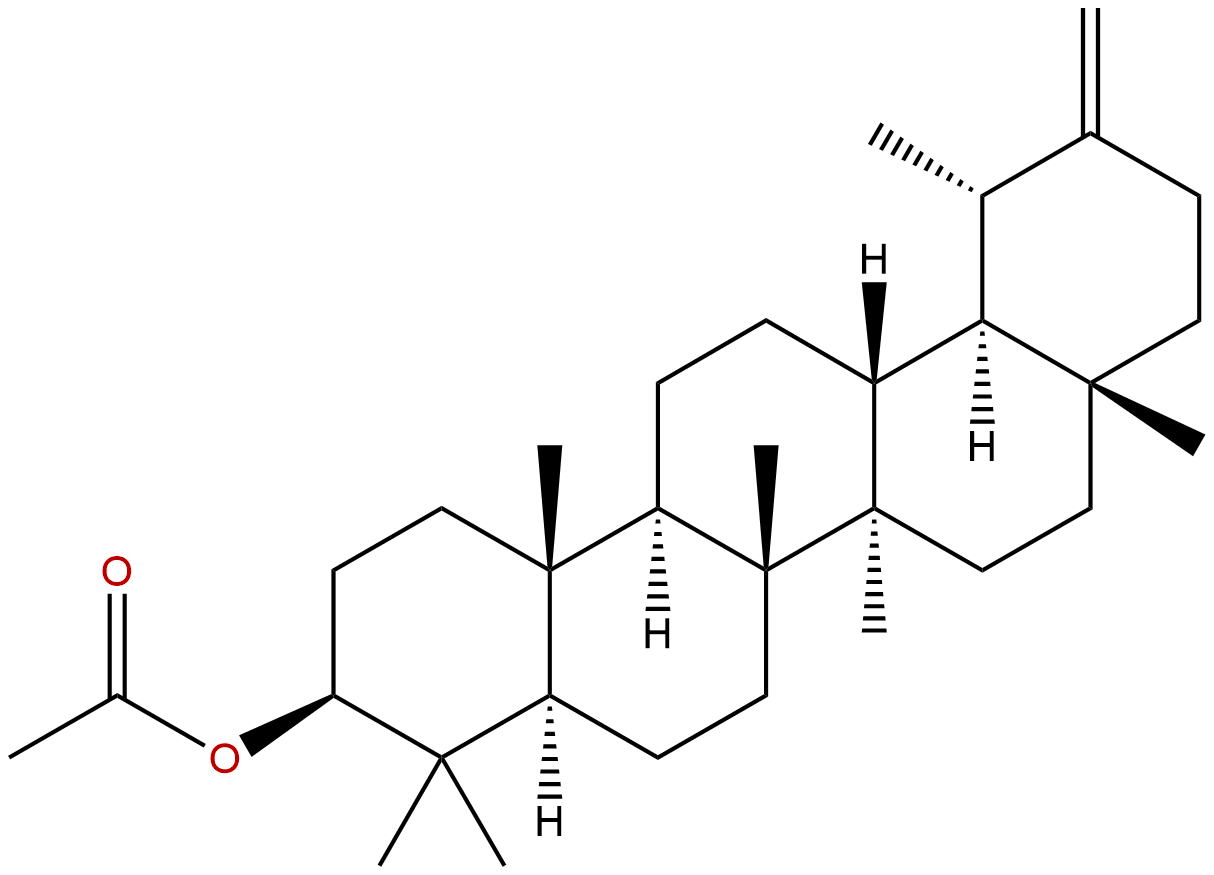
Taraxasteryl acetateCAS No.:6426-43-3 |
||||||||||
 |
|
|
||||||||

| Catalogue No.: | BP1364 |
| Formula: | C32H52O2 |
| Mol Weight: | 468.766 |
| Botanical Source: | Taraxaci herba |
Synonym name: Lactucone; Lactucerin
Catalogue No.: BP1364
Cas No.: 6426-43-3
Formula: C32H52O2
Mol Weight: 468.766
Botanical Source: Calotropis gigantea and Lactuca virosa and other plants, esp. in the Compositae
Purity: 95%~99%
Analysis Method: HPLC-DAD or/and HPLC-ELSD
Identification Method: Mass, NMR
Packing: Brown vial or HDPE plastic bottle
Can be supplied from milligrams to grams.
For Reference Standard and R&D, Not for Human Use Directly.
Inquire for bulk scale.
Description:
Taraxasterol acetate has anti-inflammatory activity in bino rats against carrageenan, formaldehyde and adjuvant induced inflammations in doses between 10 and 100 mg/kg. Taraxasterol acetate also displays potential antibacterial activities.
References:
Naunyn Schmiedebergs Arch Pharmacol. 2014 Feb;387(2):119-27.
Effect of Pluchea lanceolata bioactives in LPS-induced neuroinflammation in C6 rat glial cells.
Neuroinflammation plays a significant role in various chronic and acute pathological conditions of the central nervous system. In the Indian system of medicine, Pluchea lanceolata is used to treat the neurological disorders.
METHODS AND RESULTS:
We investigated the effect of major pentacyclic triterpene and its naturally occurring acetate derivative isolated from P. lanceolata on lipopolysaccharide (LPS)-stimulated neuroinflammatory condition associated to inflammatory cytokine production in rat astrocytoma cell line (C6). The log concentration dependence of Pluchea bioactive taraxasterol (Tx) significantly (p < 0.05) attenuates the release of pro-inflammatory cytokines, such as TNF-α, IFN-γ, and IL-6, while its in situ produced acetyl derivative, i.e., Taraxasterol acetate (TxAc), did not inhibit the LPS-induced IL-6 production at lower concentration (p > 0.05). Surflex-Dock molecular modeling study was performed to simulate the binding capacity of compounds into the active site of the TNF-α (2AZ5), tumor protein P53 (2VUK), and NF-kappa-B (1RAM). The differential inhibition of cytokines by Tx and TxAc was further confirmed by high docking scores showing the high affinity to target proteins.
CONCLUSIONS:
Findings of the study demonstrated the comparatively greater role of Pluchea triterpene than its in situ produced acetate derivate in neuroinflammation-associated disorders.
Acta Botanica Yunnanica, 2007, 29(4):479-482.
Antibacterial triterpenes from Centipeda minima (Compositae).
METHODS AND RESULTS:
A new triterpene,ursane-20(30)-en-3#beta#, 16#beta#, 21#alpha#-triol(1), together with two known compounds, Taraxasterol acetate(2) and taraxasterol(3), was isolated from the whole plants of Centipeda minima. Their structures were identified by spectroscopic analysis.
CONCLUSIONS:
Antibacterial properties of compounds 2 and 3 were evaluated against eight disease-associated microorganisms by the agar dilution method, Both of them displayed potential antibacterial activities.